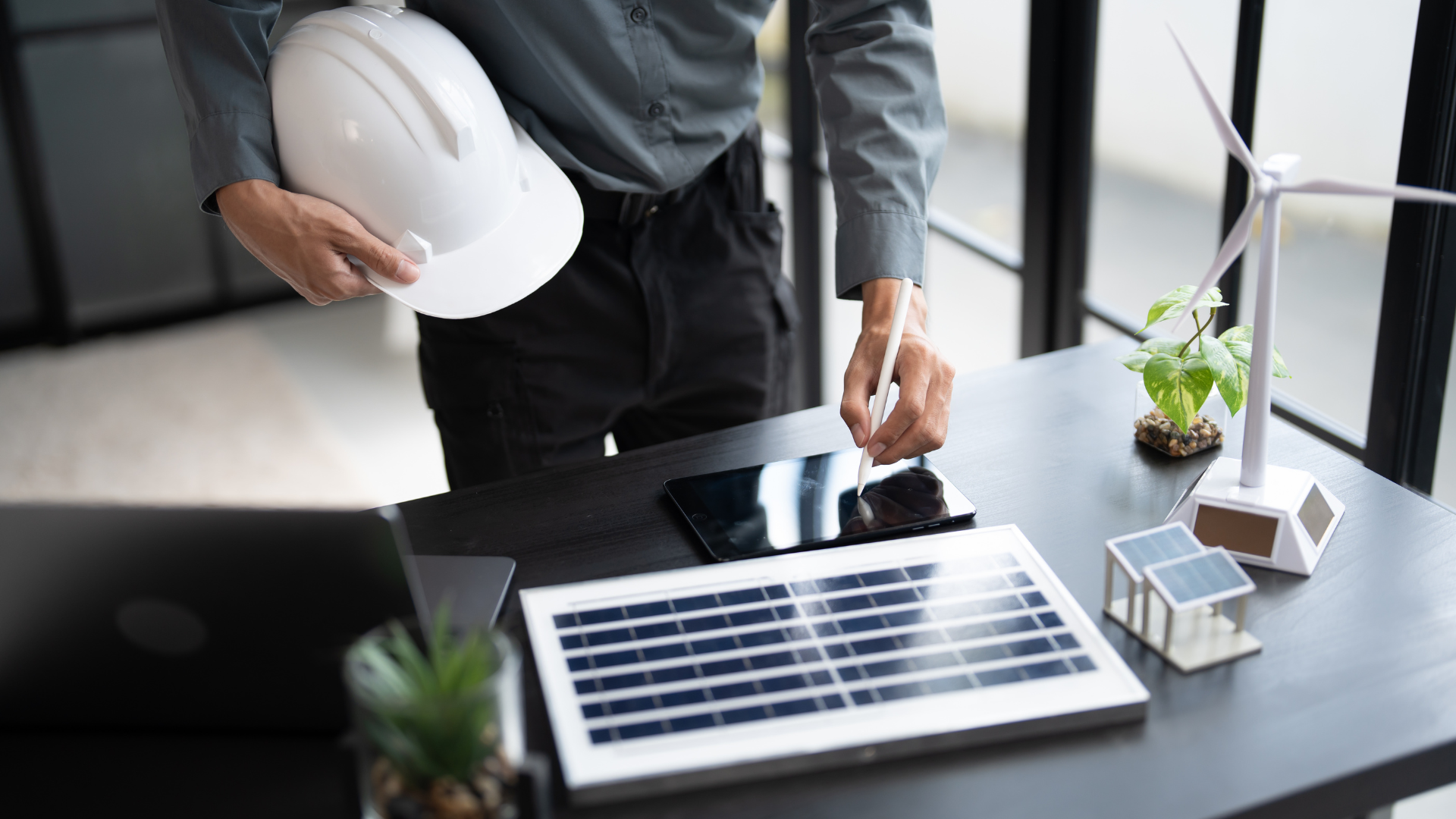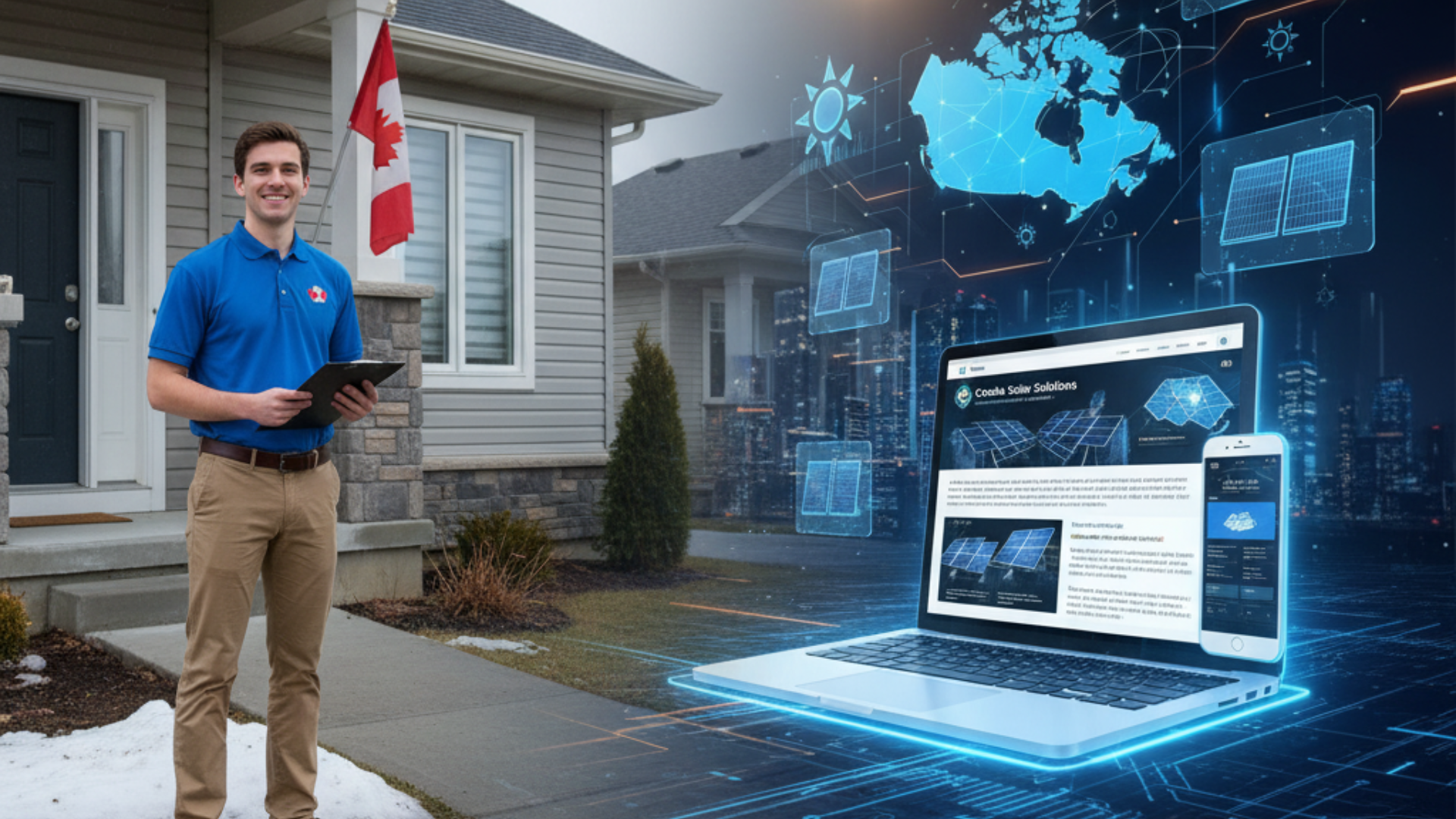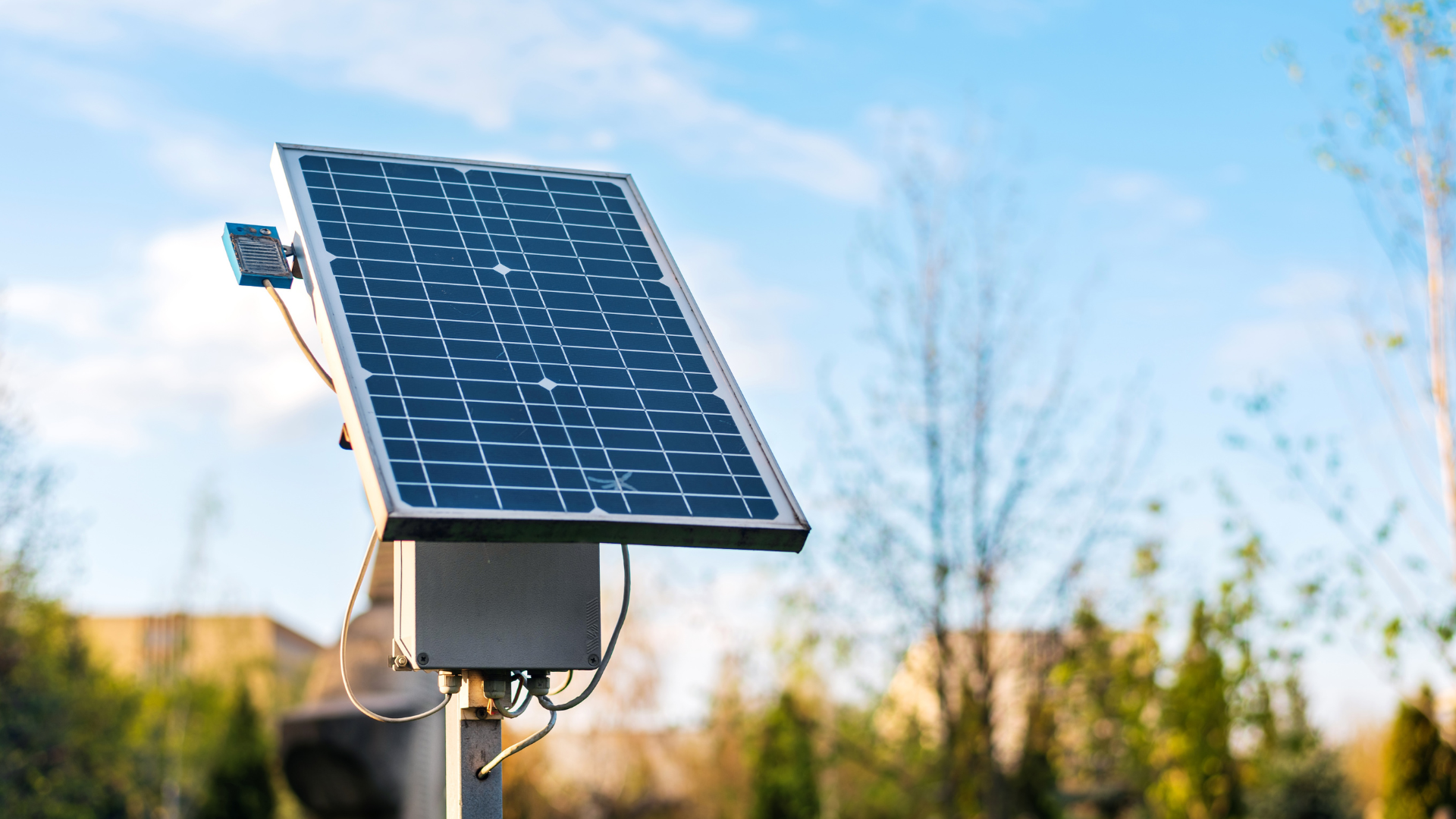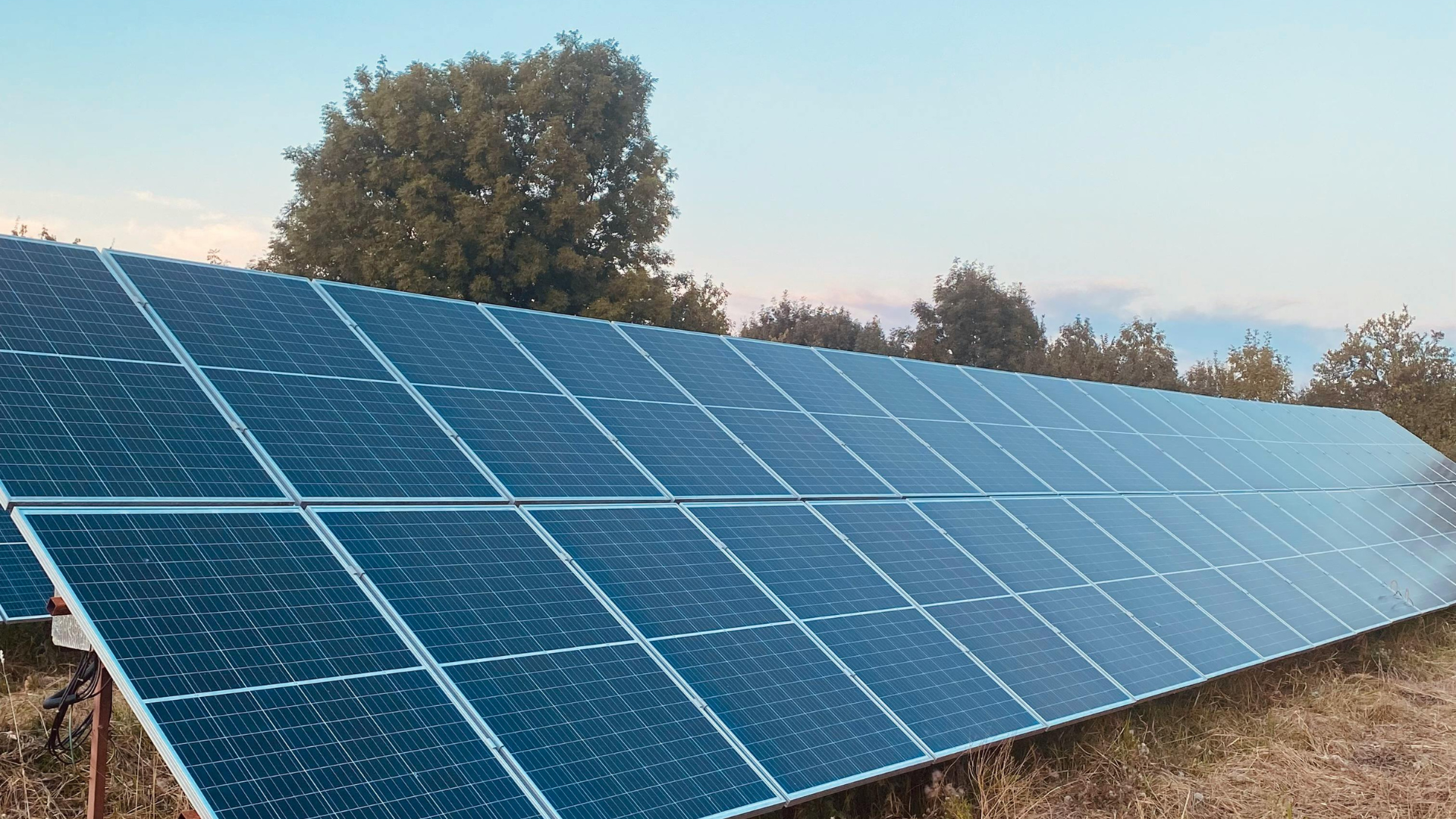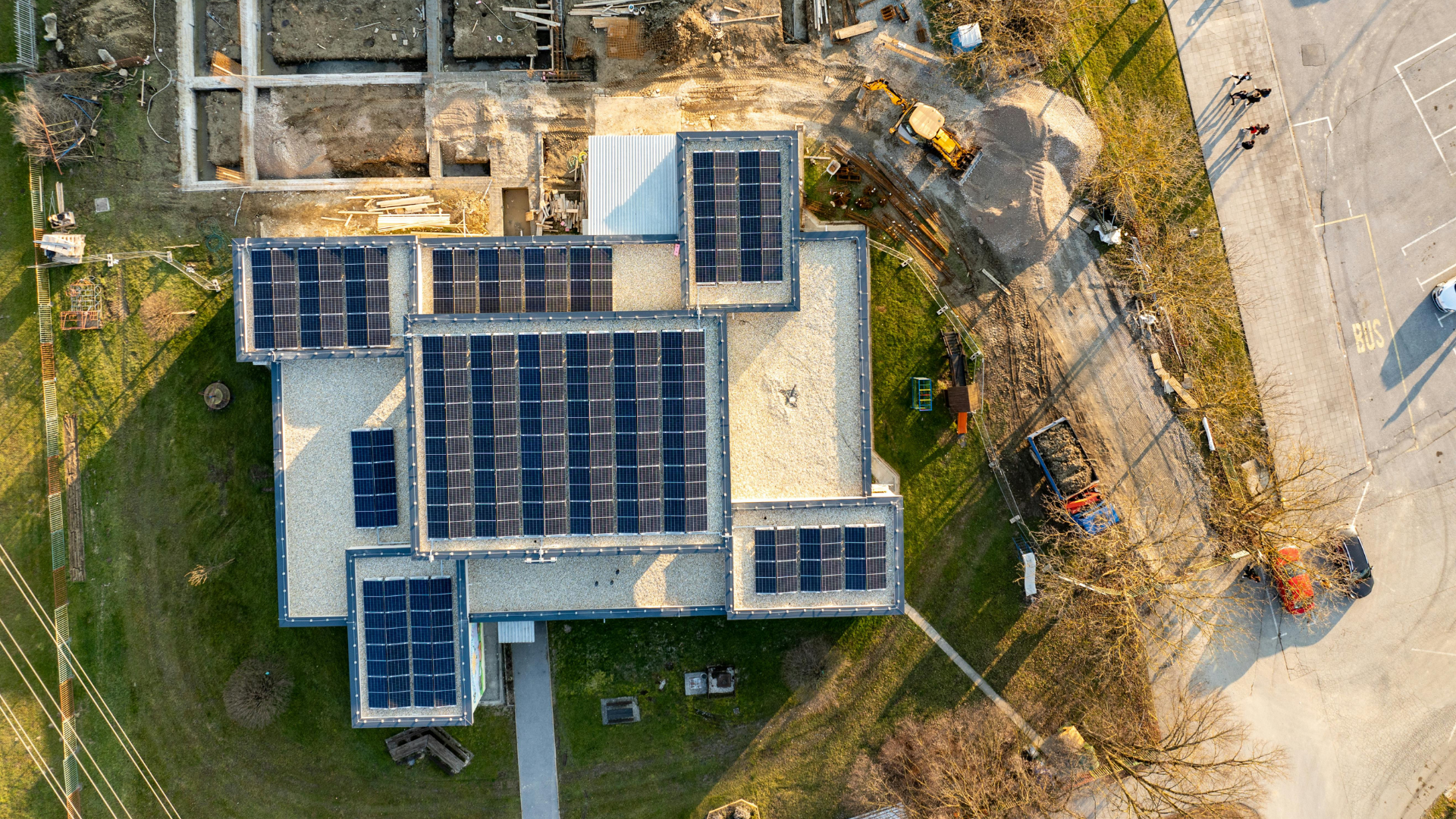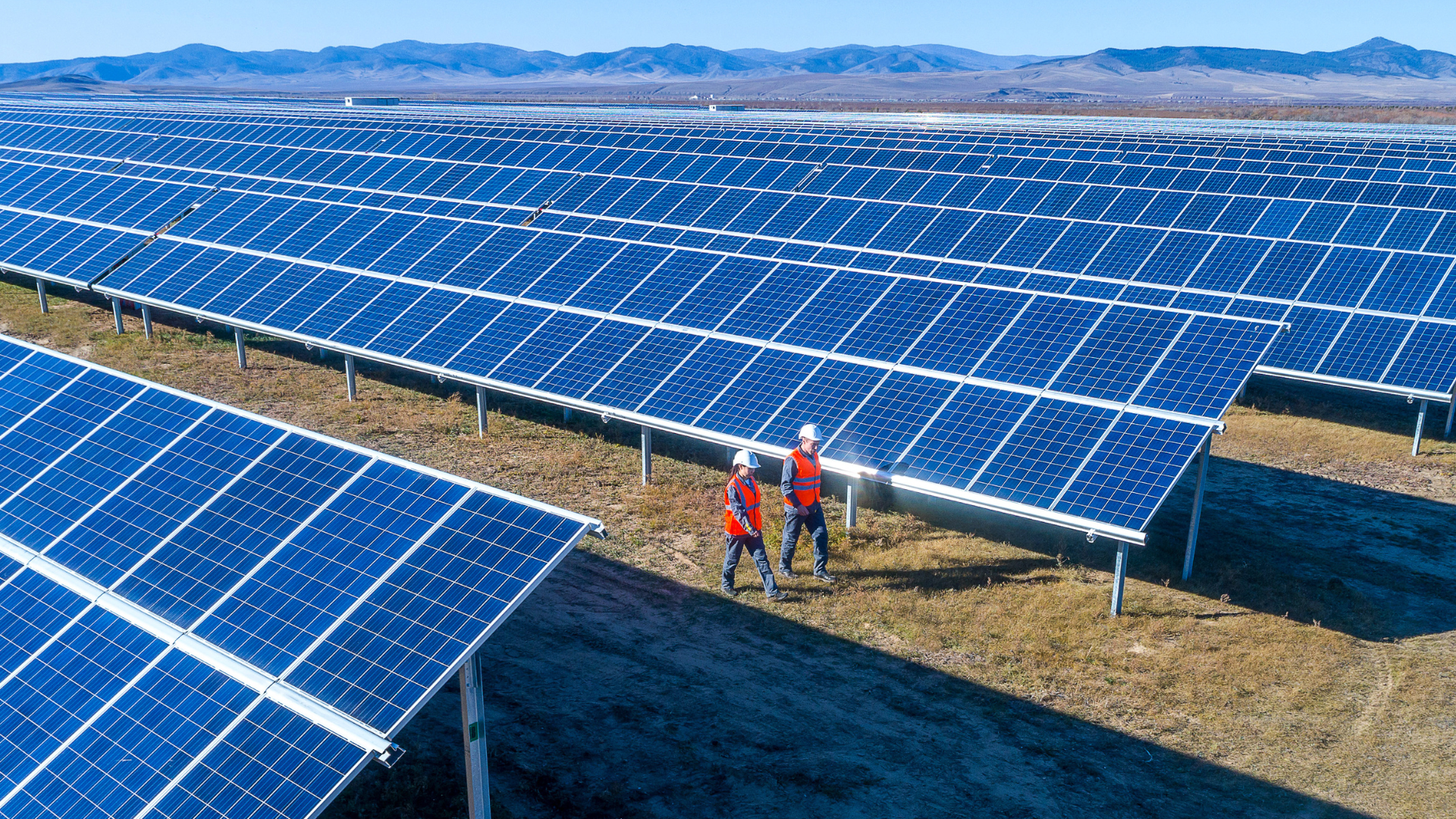June 15, 2023
Cost of Solar System Installation
Solar energy is becoming an increasingly popular option for homeowners looking to reduce their electricity bills and combat climate change. The concept of solar energy installation might sound intimidating at first, but with the right information, you can make an informed decision that works best for your budget.
In this post, we'll cover the true cost of installing a solar system and explain all the expenses associated so that you know exactly what to expect when it comes time to finance and install solar panels for your own setup.
We'll also discuss some potential money-saving tips along the way so stay tuned!
The growing popularity of solar systems
The world is gradually shifting towards cleaner and more sustainable sources of energy, and it's no surprise that the popularity of solar systems is on the rise. With global climate change looming and individuals becoming more environmentally conscious, solar energy systems have become a preferred alternative to traditional sources of power.
From residential to industrial applications, solar systems are an eco-friendly and cost-efficient solution to meet our energy needs. Furthermore, advancements in technology and improved installation methods have made solar systems accessible and affordable to a larger population than ever before.
As the world continues to shift towards clean energy, the popularity of solar systems will undoubtedly continue to grow.
Benefits of installing solar systems
Going solar has many benefits, including a positive impact on the environment and your wallet. By installing a solar system, you can significantly reduce your carbon footprint by relying on energy from renewable sources.
Not only does this help preserve the planet for future generations, but it can also lower your utility bills. With solar panels, you can generate your own electricity and potentially even earn credits for excess power that you feed back into the grid.
Additionally, solar panels require little maintenance and can increase the value of your home. Going solar is an investment in a cleaner, brighter future.
Why is it crucial to understand the costs involved in solar panel installation?
Installing solar panels can be expensive, and it's essential to understand the costs involved to make informed decisions about whether it's worth it. By understanding the various expenses that come with solar panel installation, such as equipment, labor costs, and maintenance costs, you can determine if it's a feasible option for your home or business.
Additionally, understanding the various solar panel installation costs and costs can help you identify potential savings and incentives that might be available in your area. Thus, understanding the costs involved in solar panel installation is crucial to make a well-informed decision that benefits both you and the environment.
Types of Solar Systems
There are mainly two types of solar systems, grid-tied systems, and off-grid systems, each with its unique benefits and drawbacks.
Grid-tied
A grid-tied solar system is a smart way to generate your own electricity using the power of the sun. With a grid-tied solar system, the energy produced by your solar panels is connected to the power grid, allowing you to both use and sell energy.
This system is ideal for homeowners who want to cut down on their energy bills and reduce their carbon footprint. You can feel good knowing you are using a sustainable renewable energy source that contributes to a cleaner environment.
A grid-tied solar system is reliable and efficient, providing solar companies and you with a great investment opportunity for years to come.
Off-grid
Off-grid solar systems have become incredibly popular in recent years, offering people the opportunity to live off the grid and reduce their carbon footprint. These systems are self-sustaining and do not require any connection to the traditional power grid.
They consist of solar panels that collect energy from the sun, which is then stored in batteries for later use. Off-grid solar systems can provide power to a home, cabin, or RV, making them an ideal solution for those seeking independence from traditional energy sources.
Not only do these systems promote a sustainable lifestyle, but they also offer long-term cost savings on utility bills as well. It's no wonder why so many people are turning to off-grid solar systems as a way of embracing a more eco-friendly way of living.
How does the type of solar system affect the overall cost of installation?
When it comes to installing a solar system, the type of system you choose can have a significant impact on the overall cost.
For example, a grid-tied solar system, which is connected to the traditional power grid, is typically less expensive to install than an off-grid system, which requires additional equipment such as batteries for storage.
Additionally, factors such as the size and location of the solar panels installed, as well as the quality of the equipment used, can also affect the full cost of solar panels. Ultimately, it's important to consider all of the variables when deciding on a solar system to ensure that you're making a cost-effective and sustainable choice for your home or business.
Calculating Your Home's Solar Power Requirements
Calculating your home's solar power requirements involves several factors, including your energy usage, the amount of sunlight your location receives, and the efficiency of the solar panels you choose.
Here are the general steps to calculate your home's solar power requirements:
Determine your energy usage
Start by calculating your home's average daily energy usage in kilowatt-hours (kWh) over the past year. You can find this information on your utility bills or by using an online energy calculator.
Calculate your peak energy demand
Determine the maximum amount of energy you use at any given time, known as your peak demand. This is important because you will need to size your solar panel system to handle this peak demand. You can find this information on your utility bills or by using an energy monitor.
Determine your location's solar resource
The amount of sunlight your location receives affects how much energy your solar panel system can produce. You can use an online solar calculator or consult a solar professional to determine your location's solar resources.
Choose your solar panel system
Select a solar panel system that meets your energy needs and location's solar resource. You'll want to consider factors such as the solar panel installer, efficiency, durability, and warranty.
Calculate the size of your solar panel system
To determine the size of your solar panel system, divide your average daily energy usage by the number of peak sun hours in your location.
Peak sun hours are the hours of sunlight per day when the sun is at its highest point in the sky. Your solar professional can help you determine the number of peak sun hours in your location.
Consider other factors
Other factors to consider when sizing your solar panel system include shading from nearby trees or buildings, the angle and orientation of your roof, and the type of inverter you choose.
By following these steps, you can calculate your home's solar power requirements and choose the right solar panel system for your needs. It's always a good idea to consult with a solar professional to ensure that you're getting the most efficient and cost-effective solar panel system upfront for your home.
Cost of Equipment
The cost of equipment required for a particular task depends on several factors such as the type of equipment, its quality, brand, and features. Here's a breakdown of the costs involved in purchasing necessary equipment:
Breakdown of the costs involved in purchasing necessary equipment
Basic equipment cost
The basic equipment cost is the cost of the equipment itself, excluding any additional accessories or features. For instance, the cost of a basic solar panel system may range from $5,000 to $15,000 depending on the size and quality of the panels.
Accessories and features
Additional features or accessories can increase the cost of equipment. For instance, a solar panel system may require inverters, batteries, and mounting hardware, which can increase the total cost of the system.
How does the quality of the equipment affect the cost?
The quality of the equipment can also affect the cost. High-quality equipment is generally more expensive, but it may be more efficient, durable, and come with a longer warranty. For instance, a high-quality solar panel system may cost $20,000 or more, while a lower-quality system may cost $5,000 to $10,000.
Installation Costs
The cost of installing a solar system varies depending on various factors such as the system size, location, and complexity of the installation. Here's an overview of the costs involved in installing a solar system:
Overview of the costs involved in installing a solar system
Labor cost
The labor cost for installing a solar system is typically based on the system's size and complexity. The installation process can take a few days to a few weeks, and the labor cost may range from $0.75 to $2.50 per watt, depending on the location and difficulty of the installation. For example, a 10 kW solar system installation may cost between $7,500 and $25,000.
Permitting and inspection fees
Depending on the state and city where you live, you may need to obtain permits and inspections before installing a solar system. Permitting and inspection fees can range from a few hundred to a few thousand dollars.
Additional costs
Additional costs may include electrical upgrades, roof repairs or reinforcements, and landscaping or tree removal to ensure adequate sun exposure. These costs can vary widely and should be factored into your total installation cost.
How does the complexity of the installation affect the cost?
The complexity of the installation process can also affect the cost.
For instance, if the solar system requires a ground-mount installation, it may be more complex and costly than a rooftop installation. Additionally, if the system requires electrical upgrades, such as rewiring or a new electrical panel, the installation cost will be higher.
Local Rebates and Incentives for Installing a Solar Panel System
There are several local rebates and incentives available for installing a solar panel system. These incentives can vary depending on your location and the specific program requirements, but here are some examples:
Federal tax credits
The federal government offers a tax credit of up to 26% of the total cost of the solar panel system installation. This federal solar tax credit is available through the end of 2022.
State and local tax credits
Some states and local governments offer tax credits for installing solar panel systems. These credits can vary in value and availability depending on the state or locality.
Rebates
Some solar companies reduce installation costs through rebates and other programs. These rebates can help offset the upfront cost of the solar energy system.
Net metering
Net metering is a program that allows solar panel owners to receive credit for excess energy their panels generate and send back to the grid. This can help reduce electricity bills and increase savings.
Property tax exemptions
Some states offer property tax exemptions for homes with solar panel systems. This means that homeowners may not have to pay property taxes on the added value of the solar panel system.
It's important to check with your local utility company or government to see what incentives are available in your area. Additionally, some solar incentives also may have specific requirements or application deadlines, so it's important to do your research and plan accordingly.
Financing Options
There are several financing options available to homeowners for installing solar panels.
Financing options available to homeowners for installing solar panels
Cash Purchase:
Homeowners can pay for the solar panel installation upfront with cash or a check.
Solar Loans:
Homeowners can take out a loan to finance their solar panel installation. These loans can be secured or unsecured, with interest rates and terms varying based on the lender.
Solar Lease:
Homeowners can lease solar panels from a third-party provider, paying a fixed monthly rate for the use of the panels.
Power Purchase Agreement (PPA):
Homeowners can enter into a PPA with a third-party provider, where they agree to purchase the electricity generated by the solar panels at a fixed rate for a specified period.
How does the financing option affect the overall cost of installation?
In terms of specific figures, the cost of a solar panel installation can vary widely based on several factors, such as the size of the system, the location of the home, and the specific products used. However, as an example, let's consider a 5-kilowatt (kW) solar panel system installed on a home in California, which has an average cost of $15,000.
If a homeowner were to pay for the installation upfront with cash, they would pay the full $15,000 cost of the installation.
If a homeowner were to take out a 10-year solar loan with a 5% interest rate, their monthly payment would be approximately $158, for a total cost of $18,960 over the life of the loan.
If a homeowner were to lease the same 5 kW system for 20 years, they may pay a fixed monthly rate of $75, for a total cost of $18,000 over the life of the lease.
If a homeowner were to enter into a PPA for the same 5 kW system, they may pay a fixed rate of $0.20 per kWh of electricity generated by the panels, for a total cost of approximately $18,000 over the life of the agreement.
It's important to note that these figures are for illustration purposes only, and the actual costs associated with a solar panel installation can vary widely based on many factors. Homeowners interested in financing a solar panel installation should consult with a qualified solar installer or lender to discuss their specific situation and available options.
Return on Investment
The return on investment (ROI) in solar panel installation can vary depending on several factors, such as the cost of the solar panels, the amount of the solar panel cost and energy they generate, and the cost of electricity in your area.
How can a solar system save homeowners money in the long run?
A solar system can save homeowners money in the long run in several ways:
Reduced electricity bills
A solar system generates electricity from sunlight, which means that homeowners can reduce their reliance on electricity from the grid. This can result in lower electricity bills, especially during peak usage periods when electricity prices are higher.
Increased home value
Installing a solar system can increase the value of a home. According to research, homes with solar systems sell for a premium compared to homes without solar systems. This means that homeowners can recoup the cost of the solar system when they sell their homes.
Tax credits and incentives
The government offers tax credits and other incentives to encourage homeowners to install solar systems. The solar investment tax credit is 30% for systems installed through 2032, but it is scheduled to decrease to 26% for systems installed in 2033 and 22% for systems installed in 2034 before expiring at the start of 2035.
These incentives can reduce the initial cost of the solar system, making it more affordable for homeowners.
Net metering
Net metering is a system that allows homeowners with solar systems to sell excess electricity generated by their solar system back to the grid. This means that homeowners can earn credits on their electricity bills, further reducing their electricity costs.
Reduced maintenance costs
Solar systems require little maintenance, and the cost of maintaining them is relatively low. This means that homeowners can have solar panels save them money on maintenance and energy costs in the long run.
How to calculate the return on investment for a solar system?
To calculate the return on investment (ROI) for a solar system, you will need to take into account several factors, including the initial cost of the solar system, the amount of energy it generates, and the savings on your electricity bills.
Here are the steps to calculate the ROI:
Determine the total cost of the solar system
This includes the cost of the solar panels cost itself, installation, and any additional equipment.
Calculate the expected energy output
The amount of energy generated by a solar system depends on several factors, including the size and orientation of the panels, location, and weather conditions. You can get an estimate of the expected energy output from the manufacturer or installer.
Determine the value of the electricity generated
Calculate the amount of money you would save on your electricity bill by using the solar system instead of buying electricity from the grid. This will depend on the cost of electricity in your area and the amount of energy generated by the solar system.
Calculate the payback period
The payback period is the amount of time it takes to recoup the initial cost of the solar system. It is calculated by dividing the total cost of the solar system by the annual savings on your electricity bill.
Calculate the ROI
The ROI is the return on your solar investment and is calculated by subtracting the total cost of the solar system from the total savings over the system's lifetime and dividing it by the total cost of the system.
For example, let's say you install a solar system that costs $20,000 and generates 10,000 kilowatt-hours (kWh) of electricity per year. You pay $0.15 per kWh for electricity from the grid, and the solar system is expected to last 25 years. The payback period would be:
Payback period = $20,000 / ($0.15 x 10,000 kWh) = 13.3 years
The total savings over the lifetime of the system would be:
Total savings = 25 years x 10,000 kWh/year x $0.15/kWh = $37,500
The ROI would be:
ROI = ($37,500 - $20,000) / $20,000 = 0.875 or 87.5%
Conclusion
To conclude, the cost of installing a solar system is based on many factors ranging from the size and type of system to the complexity of installation. Quality equipment can drastically reduce the upfront cost, however, it's wise to factor in long-term savings in your considerations.
Be sure to check out local rebates and federal tax credit incentives; they can save you money too. If it’s within your budget, engage with financing options as they are available in order to reduce overall financial strain.
Calculate the return on investment by estimating savings over a period of time—you may find that while upfront costs are high, the return may be well worthwhile. By having a full understanding of your particular home’s solar power requirements along with the state solar panel costs and installation-related expenses involved, you can make a more informed decision when deciding if installing a solar panel is right for you.
Sunbase CRM
Get organized with Sunbase's all-in-one solar software suite! With our powerful CRM, you can easily manage customer relationships and maximize your efficiency. Our cloud-based system tracks leads, monitors projects, and stores data safely in one central location. Try it today to get more out of your business operations!
I agree to receive marketing messaging from Sunbase at the phone number provided above. I understand data rates will apply, and can reply STOP to OPT OUT.

